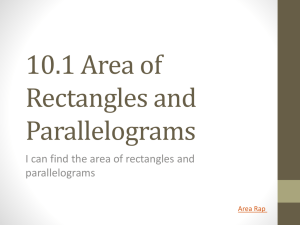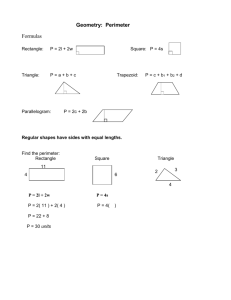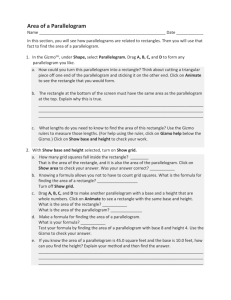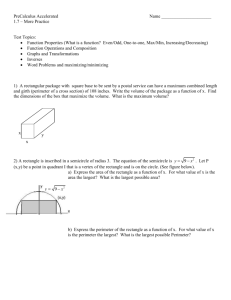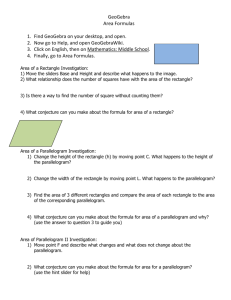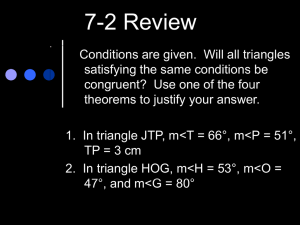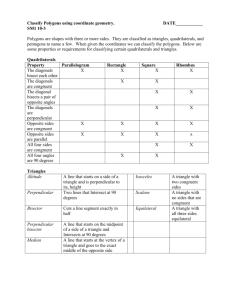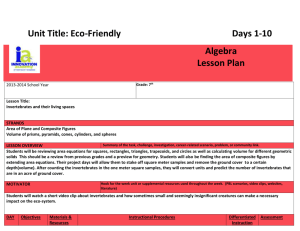Step 4 – B Activity
advertisement
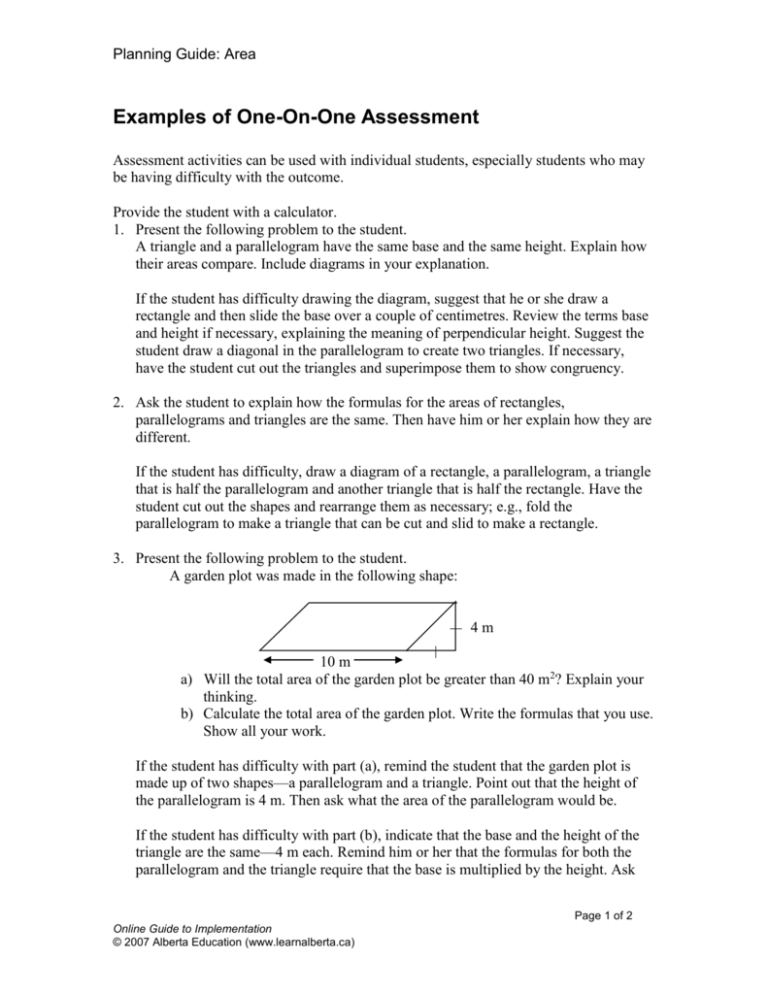
Planning Guide: Area Examples of One-On-One Assessment Assessment activities can be used with individual students, especially students who may be having difficulty with the outcome. Provide the student with a calculator. 1. Present the following problem to the student. A triangle and a parallelogram have the same base and the same height. Explain how their areas compare. Include diagrams in your explanation. If the student has difficulty drawing the diagram, suggest that he or she draw a rectangle and then slide the base over a couple of centimetres. Review the terms base and height if necessary, explaining the meaning of perpendicular height. Suggest the student draw a diagonal in the parallelogram to create two triangles. If necessary, have the student cut out the triangles and superimpose them to show congruency. 2. Ask the student to explain how the formulas for the areas of rectangles, parallelograms and triangles are the same. Then have him or her explain how they are different. If the student has difficulty, draw a diagram of a rectangle, a parallelogram, a triangle that is half the parallelogram and another triangle that is half the rectangle. Have the student cut out the shapes and rearrange them as necessary; e.g., fold the parallelogram to make a triangle that can be cut and slid to make a rectangle. 3. Present the following problem to the student. A garden plot was made in the following shape: 4m 10 m a) Will the total area of the garden plot be greater than 40 m2? Explain your thinking. b) Calculate the total area of the garden plot. Write the formulas that you use. Show all your work. If the student has difficulty with part (a), remind the student that the garden plot is made up of two shapes—a parallelogram and a triangle. Point out that the height of the parallelogram is 4 m. Then ask what the area of the parallelogram would be. If the student has difficulty with part (b), indicate that the base and the height of the triangle are the same—4 m each. Remind him or her that the formulas for both the parallelogram and the triangle require that the base is multiplied by the height. Ask Page 1 of 2 Online Guide to Implementation © 2007 Alberta Education (www.learnalberta.ca) Planning Guide: Area what other operation is included in the formula for the area of a triangle. Guide the student to find both areas, add them and write the appropriate units. 4. Ask the student to find the areas of the following circles, showing all his or her work. a) 12 cm b) 8 cm 2 If the student has difficulty with part (a), ask him or her what the formula is for the area of a circle. If the student knows the formula, ask him or her what each variable in the formula represents. If the student does not know the formula, provide it for him or her. Remind the student that the formula requires the measure for the radius. Prompt the student to discuss that the radius is half the diameter and is therefore 6 cm. If the student has difficulty with part (b), remind him or her that the box in the corner of the angle means it is a right angle. Have the student draw in the other three sectors, all of which are congruent. 5. Present the following problem to the student. A circular plate has a radius of 20 cm. a) Estimate the area of the plate. Explain your thinking. b) Write the formula for the area of a circle. c) Calculate the area of the plate. Show all your work. If the student has difficulty with part (a), remind the student that the formula requires that the radius is multiplied by itself. Ask the student for the approximate value of pi (about 3) and use that number to multiply the product of the radius by itself to get an estimate. If the student has difficulty with part (b), provide the formula for him or her. If the student has difficulty with part (c), suggest that he or she draw and label an appropriate diagram. Provide guidance in substituting the radius into the formula. Suggest that the student use a calculator to find the area. Page 2 of 2 Online Guide to Implementation © 2007 Alberta Education (www.learnalberta.ca)

